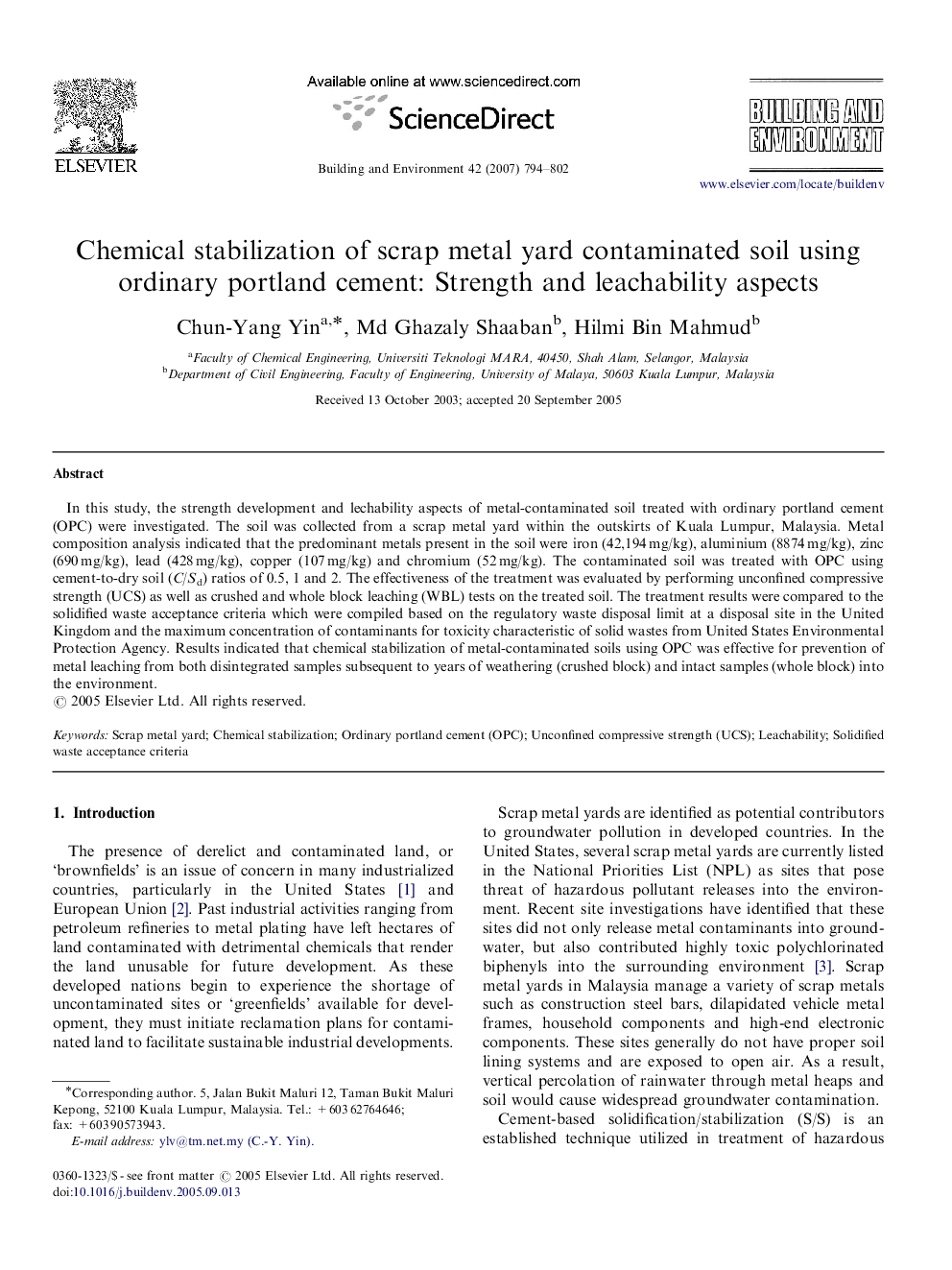| Article ID | Journal | Published Year | Pages | File Type |
|---|---|---|---|---|
| 250241 | Building and Environment | 2007 | 9 Pages |
In this study, the strength development and lechability aspects of metal-contaminated soil treated with ordinary portland cement (OPC) were investigated. The soil was collected from a scrap metal yard within the outskirts of Kuala Lumpur, Malaysia. Metal composition analysis indicated that the predominant metals present in the soil were iron (42,194 mg/kg), aluminium (8874 mg/kg), zinc (690 mg/kg), lead (428 mg/kg), copper (107 mg/kg) and chromium (52 mg/kg). The contaminated soil was treated with OPC using cement-to-dry soil (C/Sd) ratios of 0.5, 1 and 2. The effectiveness of the treatment was evaluated by performing unconfined compressive strength (UCS) as well as crushed and whole block leaching (WBL) tests on the treated soil. The treatment results were compared to the solidified waste acceptance criteria which were compiled based on the regulatory waste disposal limit at a disposal site in the United Kingdom and the maximum concentration of contaminants for toxicity characteristic of solid wastes from United States Environmental Protection Agency. Results indicated that chemical stabilization of metal-contaminated soils using OPC was effective for prevention of metal leaching from both disintegrated samples subsequent to years of weathering (crushed block) and intact samples (whole block) into the environment.
